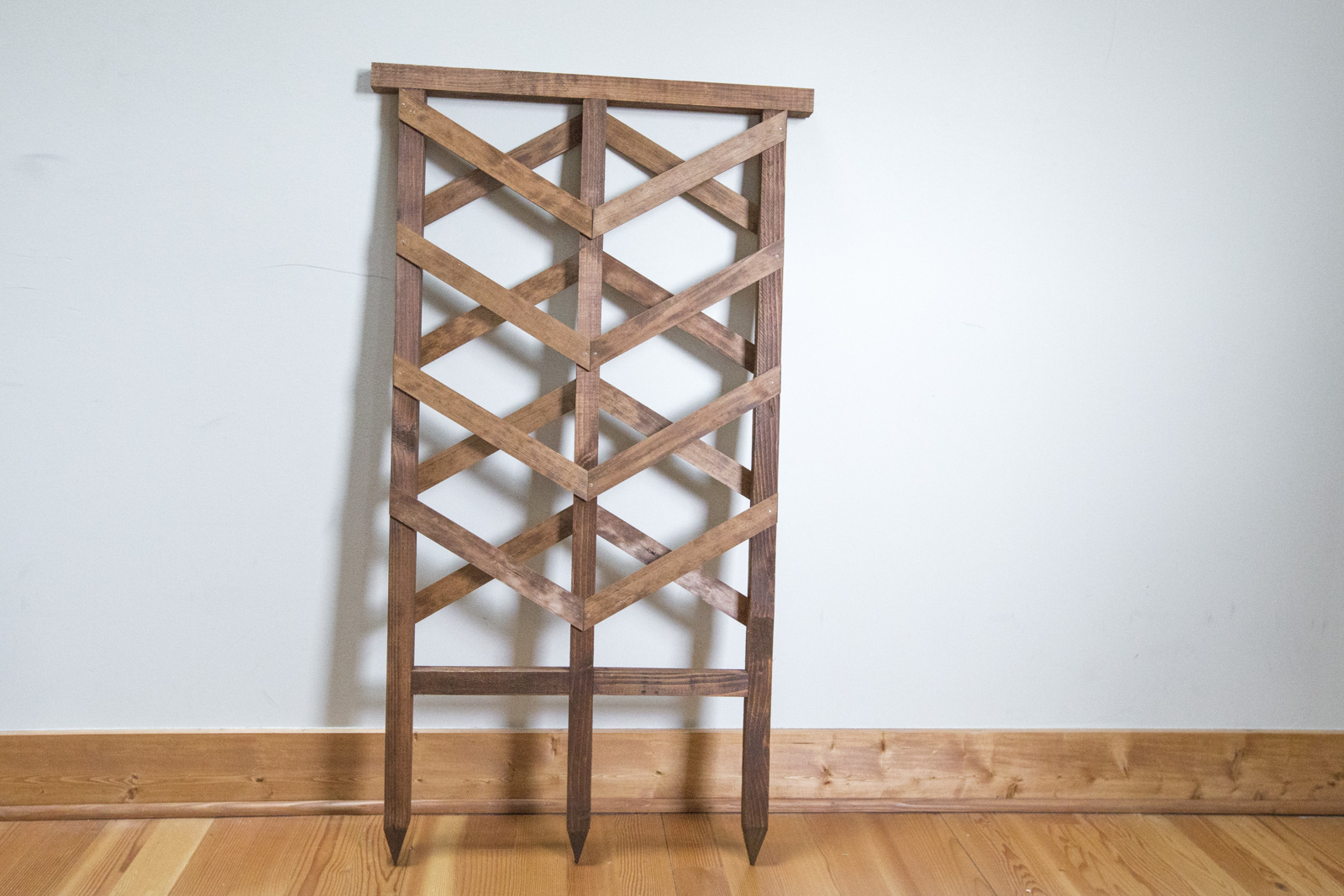
How to Build a Mini Garden Trellis

"There are all sorts of plants that need a little extra support as they grow. Some plants get really tall. Others are itty-bitty, and they stay that way."
Materials
Last summer we built this beautiful trellis. It's great for plants that will grow to be very tall. but not all plants will be giants. Today's project is a trellis that's the perfect mini option for all your spring starters. Here's a great article from Seattle Tilth about vertical gardening if you're limited on space. Did you know besides pole beans and peas, you can also grow cucumbers, pumpkins, and squash vertically?

Step 1: Make your Cuts
To begin, get your miter saw and cut one wood stake to 27 1/2". Cut the second stake into two 9 3/4" lengths. Leave the remaining three stakes as-is.
Then, set the miter saw to 60° and cut 16 lattice strips to 13 7/8" making sure that both ends are parallel to each other. As you cut, begin to do a dry fit of the trellis, making sure that all the pieces are the correct length and adjusting as needed.
Step 2: Attach Stakes Together
Next, attach the wood stake frame of the trellis together. The long stake (27 1/2") will be the top of the trellis. Measure in from both ends and mark at 1 3/4" and at 3 1/4". From one end measure and mark at 13" and at 14 1/2". Line up the top of the three uncut stakes along these marks. Predrill and secure in place with two 3" screws.

Step 3: Fit Cross Beams in Place
Now, fit the lower cross beams in place. Measure down from the top of the vertical stakes and mark at 35 3/4". The cross beams will be placed just under this mark. Predrill and secure the first side in place. Secure the second through the outside beam—and then get ready, because this part is a little tricky. Predrill at an angle through the cross beam into the vertical support. A shorter screw is better for this connection.
Note: the best way to drill a diagonal hole is to start drilling straight down into the wood, and then angle your drill once you've made an indent.


Step 4: Sand
Grab some sandpaper to do a little sanding of the edges where the wood tends to splinter. You won't be handling the trellis every day, so don't worry about making it perfectly smooth.

Step 5: Stain
It's time to stain. Following the directions on the can, let the stain soak in for several minutes before wiping off any excess with a rag. Because the lattice is a different type of wood from the stakes it will absorb the stain a little differently. Two coats may be needed to make the wood match.

Step 6: Create a Chevron Pattern
After the stain dries, it's time to attach the lattice. First measure down the length of the middle board where the points of the chevron pattern will be. Using a pencil, mark at 8 3/4", 16 3/4", 24 3/4", and 32 3/4". This will be a guide for the bottom point of the lattice. Position the lattice and predrill with 1/16" bit to prevent splitting. To secure, hammer a finish nail into place.
Flip the trellis over and mark 8 3/4", 16 3/4", and 24 3/4" along the middle board. Starting at the very top of the board, position the lattice pieces, this time with the chevron pattern pointing up. Pre-drill and hammer in place.


Step 7: Enjoy your Trellis
Use a rubber mallet—or a hammer and a block of wood—to hammer the trellis into the ground. If more support is needed to hold your trellis upright, steel stakes can be screwed onto the bottom of the wood stakes and driven deeper into the ground.
Now, hurry up and wait for spring so you can get to gardening with your trellis!









